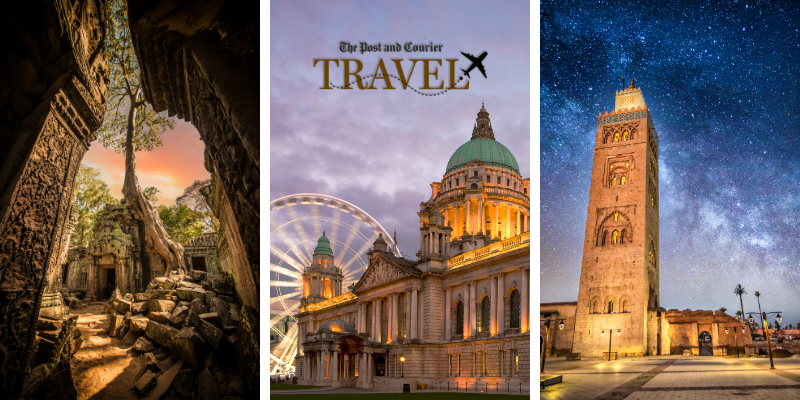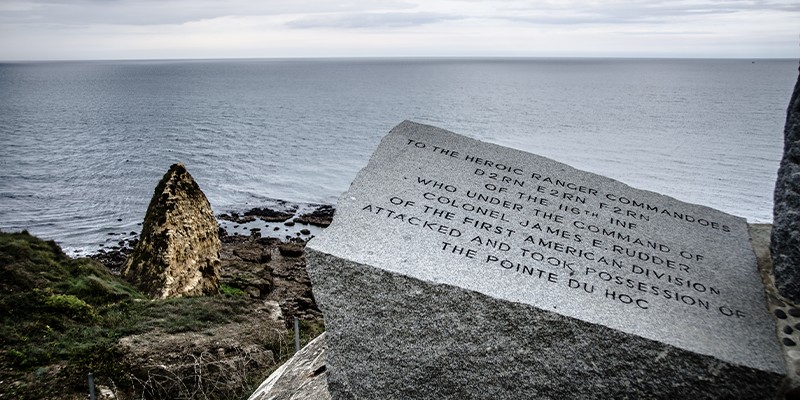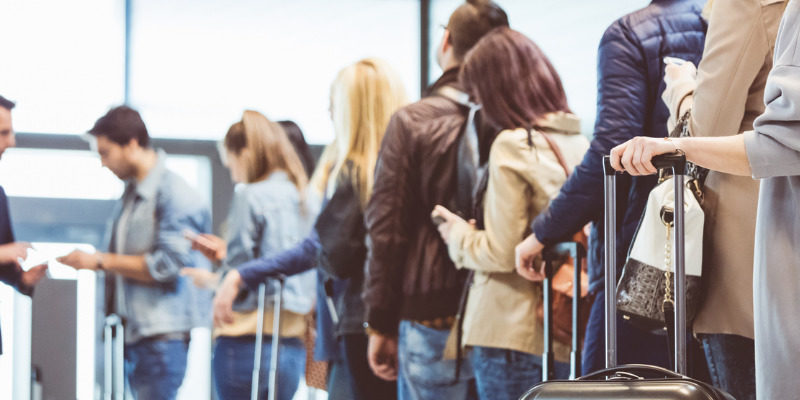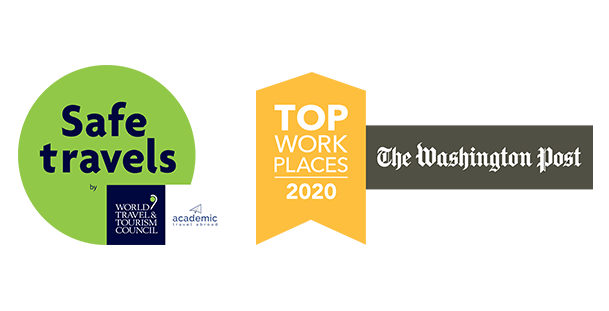ATA Partners with Charleston’s Post and Courier Editor-in-Chief on a new travel initiative. Last summer, Autumn Phillips, Editor-in-Chief of the Post and Courier, called and asked us to help her launch a travel program for Post and Courier subscribers and their friends and family. Autumn is an accomplished writer and traveler
Expert Advice
The Case FOR Travel: Life Enriched
The Case FOR Travel: Life Enriched by Kate Simpson, President There was quite a brouhaha in the world of travel writing this summer. A professor of philosophy at the University of Chicago, Agnes Callard, wrote a piece in The New Yorker published at the end of June and entitled The Case Against Travel. Ross Douthat of The New York Times responded with his own counter-argument in late July. Then Arne Weissmann of Travel Weekly concluded a “mistrial” in early August. Not to mention many other sub-Reddits and social media discussions. You can guess where I, as President of Academic Travel Abroad, land. While I won’t bore you with the synopsis of the various positions for and against travel, I do encourage you to read and consider these points of view. Here is my counter to Professor Callard: Travel, mobility, exploration, discovery, encounters—these are all essential and compelling human needs. This is one reason why we, at ATA, never failed to believe throughout the pandemic that travel would return and flourish once again. Even this National Geographic writer in September 2020 expressed a similar viewpoint: Travel is essential the way books and hugs are essential. Food for the soul. So while Callard claims it’s all about empty locomotion, which we also know to be critical to our health and wellbeing, the benefits extend far beyond exercise. Travel is a primal instinct. Travel is “an extension of one’s education, a deepening of knowledge,” as Douthat writes. Of course, there will always be those who travel for mindless entertainment and superficial Insta moments. (Humans are also allowed such interludes.) Callard seems to condemn all tourists and travelers to this category, a view I find condescending and conveniently simplistic. Travel connects and bonds—whether it be with your fellow travelers or the locals you encounter along the way. Callard describes travel as a lonely pursuit: During my Paris wanderings, I would stare at people, intently inspecting their clothing, their demeanor, their interactions. I was trying to see the Frenchness in the French people around me. This is not a way to make friends. Indeed, we do not travel to observe people as we would animals in their natural habitat, but rather to immerse ourselves in the local culture and assimilate as much as possible and learn new ways of living. Callard’s most emphatic claim is one I object to the most. She writes “the single most important fact about tourism is this: we already know what we will be like when we return… Travel is a boomerang. It drops you right where you started.” At Academic Travel Abroad, both a study abroad provider and an educational travel company, we have myriad examples of both students and travelers returning home changed in fundamental ways. I will cite just two: A Black student from New Orleans with high financial need, once a Katrina refugee, who had never left her state, let alone the country, goes to Taiwan to study Mandarin. She is a first-generation college student and her trajectory in life is forever altered. A world of possibilities opens for her. She now has a successful career in international finance and accounting and all her nieces and nephews are inspired to explore the world beyond their city. A group of trustees from a major national organization travel to Cuba. Some are liberal, some conservative, some Cuban American. All bring their own preconceptions about this island nation with them. All leave its shores with a fundamentally different understanding of U.S. policy toward Cuba. One offers to call his Congress person to lobby for change. Callard cites the disappointment of unmet expectations when traveling and how a traveler “outsources the vindication of his experiences to the ethnologist, to postcards, to conventional wisdom about what you are or are not supposed to do in a place. This deference, this “openness to experience,” is exactly what renders the tourist incapable of experience.” Yet it is when one experiences a dissonance with what we thought we knew to be true and what is true that growth, adaptability, resilience and self-awareness are augmented. It is in these moments that we question our existing values, our biases and our past education. Humility is expanded, and we are invited to embrace the unexpected, to settle into discomfort, and to open our hearts and minds to all that is not familiar. Callard’s final salvo against travel is the fact that it is a way of denying we will all one day die: the prospect looms, terrifyingly, as “More and more of this, and then I die.” Travel splits this expanse of time into the chunk that happens before the trip, and the chunk that happens after it, obscuring from view the certainty of annihilation. She’s right. Travel gives our lives meaning. Why? Because it educates, challenges, changes and enriches us in so many ways. Please write to me at [email protected] to share your reaction to these articles.
Is the Travel Industry Finally in Recovery Mode?
For two years, we have watched our hopes of a rapid travel industry recovery hit a series of roadblocks. Delta and Omicron delayed border openings and prompted the U.S. Department of State to flag most of Western Europe as “Level 4” for health risks. As we write this, the current sanctions on Russia have inflated fuel costs, created more volatility for the airlines, and caused travelers to worry if the fighting in Ukraine will be contained.
Introducing ATA’s Comprehensive Traveling Again Plan
Introducing ATA’s Comprehensive Traveling Again Plan On August 6, 2020 the Department of State lifted the Global Level 4 Health Advisory, almost six months after it was initially put in place on March 19, 2020. While the United States continues to see a surge in new cases – a fact that has led many countries to prohibit American arrivals – the lifting of the Global Level 4 health advisory is a step in the right direction. It also happens to be Step 1 in our detailed plan for returning to travel. While this crisis is unique in many ways, it is only one of many that ATA has managed during its 70 year history. From nuclear meltdowns and natural disasters to wars and terrorism, ATA’s risk management mettle has been thoroughly tested. As we set to work on the plan, we began with a set of guiding principles: Safe and enjoyable travel is possible even before a COVID19 vaccine is widely available. By adopting the World Tourism and Travel Council’s safety protocols, ATA joins other travel companies, governments, health experts and industry associations to develop meaningful action plans to optimize recovery efforts in the travel industry. Our travelers will place greater value on health than on individual freedom when traveling in the COVID19 era. This means that we will ask each traveler to abide by a code of conduct that protects his/her safety as well as the safety of fellow travelers, trip leaders, in-country hosts, and others. Wise destination choices and clear communications to travelers are paramount. We’ve shared our thoughts about how important it is to communicate during a crisis; we also believe that wisely selecting destinations with fewer health or safety risks will speed our overall recovery. Click here to read our comprehensive return to travel plan. We can’t wait to get back out there with you!
The Time is Now to Plan for Post-Pandemic Success
The Time is Now to Plan for Post-Pandemic Success Travel industry experts and psychologists agree that once the COVID-19 pandemic is managed, human beings will travel again, with more enthusiasm and abandon than ever before. Travel, mobility, exploration, discovery, encounters—these are all essential and compelling human needs. While crisis management may be your main focus right now, mid-pandemic, brands who take this time to not only deal with the situation at hand, but also create plans to prepare for the future will find themselves benefitting from the pent-up demand and weakened competition when the world is hungry for travel again. After 70 years of experience and unwavering stability through several crises, ATA is well-positioned to establish and support your experiential brand extension to generate revenue and deepen consumer relationships as the world rebounds. Whether you are launching a brand-new travel program or re-evaluating offerings for your existing brand, now is the time to take action, and we are here to guide you along the way. Travel Planning Timeline for Post-Pandemic Success NOW Evaluate destinations that might appeal to your audience. Narrow down your list and focus on a 60/40 breakdown of domestic vs. international destinations. Domestic destinations are generally perceived to be lower-risk following a large-scale crisis. There is also an expectation that domestic travel will return more quickly than international travel, as travelers test the waters closer to home. ATA can help guide you through this process and will ultimately develop detailed proposals to present for final consideration, complete with pricing. In the next 3 months Finalize selections for your portfolio of trip offerings and bring marketing on board. Build your ideal marketing plan to be ready for launch when timing is right. For new travel brands, this plan should include a high-level promotion for the launch of your new travel program as well as a deeper dive into the inaugural series of trips. For existing travel brands, your marketing efforts should focus on why certain destinations were chosen and what you are doing to ensure safety for travelers on the ground. Regardless of whether you are launching a new travel brand, or new trips for the coming year, this marketing plan needs to cover all possible marketing channels, from email and web to newsletters, signage, social media, and any other channels already used by your organization. As you create your marketing strategy, ATA is happy to collaborate and advise. Early Fall 2020 Once a marketing plan is in place, it is time to start building out creative assets that will ultimately be needed for launch. For new travel brands, now is the time to get creative—establish a logo, custom branding, and a website for your travel initiative. For new or existing brands, other creative assets to consider are digital brochures and other graphics to be used in emails, on social media, and in promotion. ATA has an in-house design team to support creative efforts if collaboration throughout the process is desired. Fall 2020-Spring 2021 Now that you have a solid foundation in place – trips planned, marketing efforts ready, and a website, logo, and other creative assets established– it is time to watch and wait for ideal marketing conditions to announce your travel program, or new trips, into the marketplace. As with anything, timing is essential. As an active member in several travel organizations and with employees across the globe, ATA is keenly following the market to ascertain the perfect timing. Now is the time to take action and be prepared for the travel resurgence. There is huge opportunity to be seen as a leader in the recovery of the travel and hospitality industry and travelers will be yearning to explore the world again when it is safe.
Communicating During a Crisis
Communicating During a Crisis Why Regular Communication with Stakeholders is Important, Even if you Don’t Have New Information to Share We are six months into a new year, a new decade, and a new normal. International and domestic borders are shut down, employees are working from home indefinitely, and the world has more-or-less come to a standstill as a result of the COVID-19 pandemic. As we all traverse the many obstacles presented during this crisis, it is important to remember the crucial role that communication plays. It might seem easiest to tackle one obstacle at a time during a crisis and wait to communicate with stakeholders until you have solutions to the problems at hand. Chances are, though, you likely won’t be able to answers all the questions before another issue presents itself. Our advice? Communicate anyway. Communicate early, regularly, and often to stay in touch with important stakeholders. Ongoing communication allows you to share facts, data, and decisions; instill and foster confidence and trust in your organization; and at the very least, let them know you’re still in business. Stakeholders need facts, data, and decisions from trustworthy sources. During a crisis, the number one thing your stakeholders want from you is a partner they can trust. They want transparent facts about what is (or is not) happening, to know what they can expect and how it will impact business, and what measures you are taking to weather the storm. There will undoubtedly be an influx of misinformation, as we have seen during the COVID-19 pandemic. Put everyone at ease by collecting information from reliable sources, taking the time to digest it, and then sharing that information clearly and frequently. Communication builds brand loyalty and customer confidence. When you establish good communication in normal times (with no crisis), your partners trust you and feel taken care of. When you continue with that same level of communication during a crisis, it instills confidence that they are dealing with a professional organization; they feel like they haven’t been, and won’t be, forgotten in the midst of the chaos. Happy travelers, employees, and partners is a win-win-win situation. Happy travelers become loyal customers (who share their experiences with friends and family); satisfied employees feel cared for by their employer and are therefore motivated to continue their good work; and clients feel that they have a true partner that will help them weather any storm. Silence leads to doubts. When a company goes quiet during a crisis, stakeholders assume one of two things: 1. You’re not thinking of them and their concerns or 2. Your business is in trouble. Don’t let anyone assume the worst. Stay top-of-mind by communicating regularly with important people, even if you don’t have anything new or important to pass along. Communication doesn’t always have to have an end goal of delivering new information. Sometimes, the goal of communicating is much simpler—to let them know you’re thinking of them, to share that you are working on a post-crisis plan, and to remind them that you’re available to answer their questions. Communicating to travelers Just like partners, travelers, too, need consistent, reliable, and early communication. They need to feel trust in their travel provider and support from any business into which they’ve invested their time and money. Here is what some of our travelers have said after receiving our regular traveler communications: “Many thanks for sharing the current status of our Ireland trip, given the virus concerns around the world. We completely trust that ATA will make appropriate decisions concerning the travel risk associated with COVID-19!” “Thanks for the update. For what it’s worth, we’re willing to wait until the last minute for a decision. But if travel isn’t possible in October of this year, we’d prefer to reschedule rather than cancel.” “Hiya and thanks for your email re: the potential cancellation of the Looted Art trip. Completely understand. Perhaps I am an eternal optimist, but I am ever hopeful. So I shall do what the ancients have suggested: prepare for the worst and hope for the best.” “Thank you for the update. I can’t say it hasn’t crossed my mind, but I usually am a positive, non-worrying type. Thanks for keeping us informed.”







